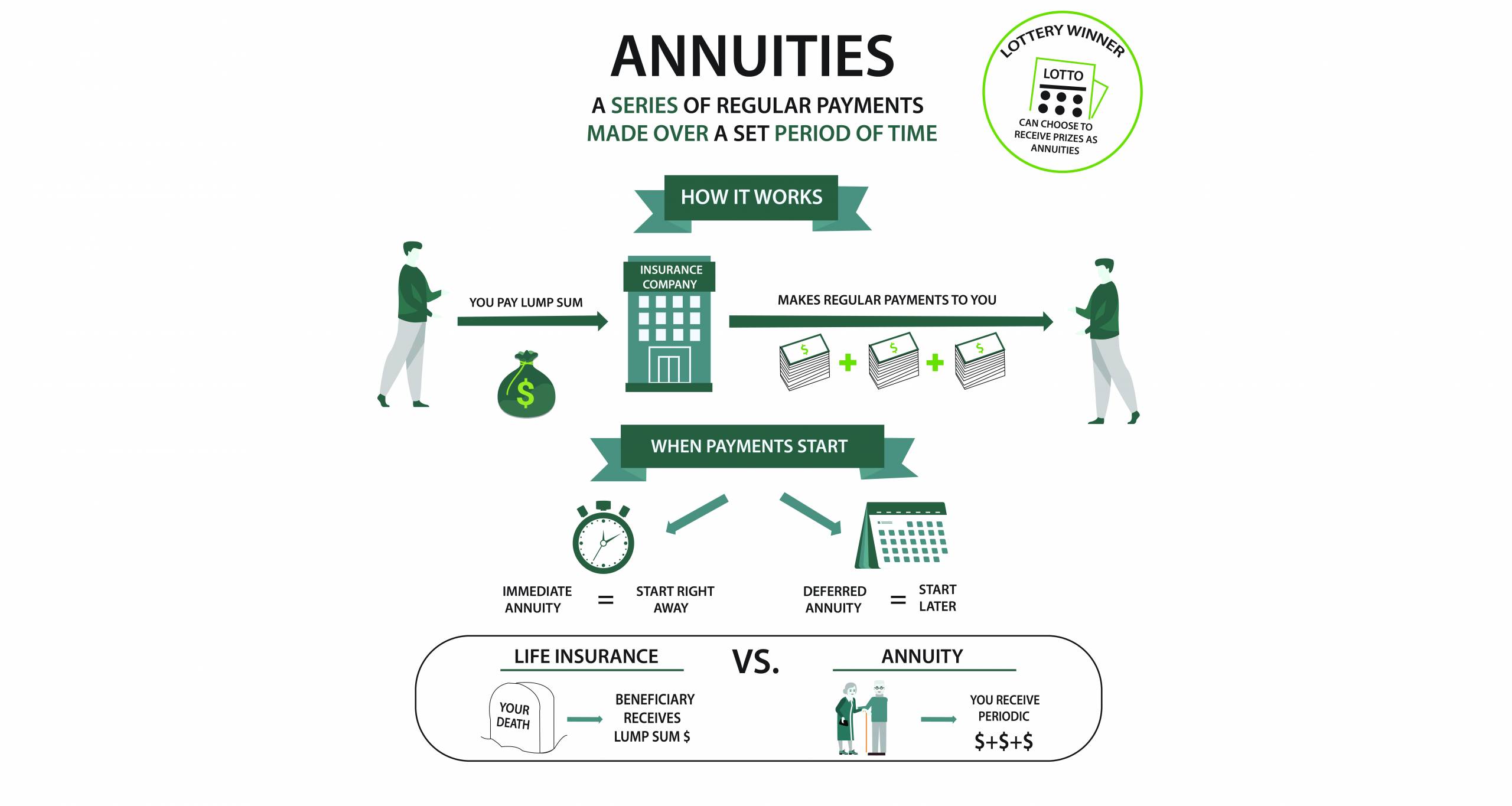All Categories
Featured
Table of Contents
Equally as with a repaired annuity, the owner of a variable annuity pays an insurance coverage firm a swelling amount or collection of settlements for the pledge of a collection of future repayments in return. As mentioned above, while a fixed annuity expands at an assured, continuous price, a variable annuity expands at a variable rate that depends upon the efficiency of the underlying investments, called sub-accounts.

Throughout the build-up stage, possessions invested in variable annuity sub-accounts expand on a tax-deferred basis and are taxed just when the agreement proprietor withdraws those profits from the account. After the build-up stage comes the earnings phase. Over time, variable annuity possessions ought to theoretically raise in value till the agreement owner determines he or she would such as to start taking out cash from the account.
One of the most considerable issue that variable annuities usually present is high expense. Variable annuities have a number of layers of charges and expenditures that can, in aggregate, produce a drag of as much as 3-4% of the agreement's worth every year. Below are the most usual charges connected with variable annuities. This cost makes up the insurance provider for the risk that it thinks under the terms of the agreement.
Analyzing Strategic Retirement Planning Key Insights on Pros And Cons Of Fixed Annuity And Variable Annuity Breaking Down the Basics of Variable Vs Fixed Annuity Advantages and Disadvantages of Tax Benefits Of Fixed Vs Variable Annuities Why Fixed Vs Variable Annuity Pros And Cons Is Worth Considering Fixed Index Annuity Vs Variable Annuities: How It Works Key Differences Between Indexed Annuity Vs Fixed Annuity Understanding the Rewards of Annuities Fixed Vs Variable Who Should Consider Strategic Financial Planning? Tips for Choosing the Best Investment Strategy FAQs About Planning Your Financial Future Common Mistakes to Avoid When Planning Your Retirement Financial Planning Simplified: Understanding Your Options A Beginner’s Guide to Retirement Income Fixed Vs Variable Annuity A Closer Look at How to Build a Retirement Plan
M&E expense charges are determined as a percent of the agreement value Annuity companies hand down recordkeeping and various other management prices to the agreement proprietor. This can be in the form of a flat yearly cost or a percentage of the contract value. Management costs might be included as part of the M&E danger cost or may be assessed individually.
These costs can range from 0.1% for easy funds to 1.5% or more for proactively handled funds. Annuity contracts can be customized in a number of means to serve the specific demands of the agreement proprietor. Some typical variable annuity cyclists include assured minimum accumulation benefit (GMAB), ensured minimum withdrawal benefit (GMWB), and assured minimum earnings benefit (GMIB).

Variable annuity payments supply no such tax reduction. Variable annuities tend to be extremely inefficient cars for passing wide range to the future generation because they do not delight in a cost-basis modification when the original agreement proprietor passes away. When the owner of a taxable financial investment account dies, the expense bases of the investments held in the account are adapted to reflect the market costs of those financial investments at the time of the owner's death.
Breaking Down Your Investment Choices Everything You Need to Know About Financial Strategies Breaking Down the Basics of Investment Plans Pros and Cons of Pros And Cons Of Fixed Annuity And Variable Annuity Why Choosing the Right Financial Strategy Can Impact Your Future How to Compare Different Investment Plans: How It Works Key Differences Between Different Financial Strategies Understanding the Risks of Fixed Annuity Or Variable Annuity Who Should Consider Strategic Financial Planning? Tips for Choosing the Best Investment Strategy FAQs About Planning Your Financial Future Common Mistakes to Avoid When Choosing Pros And Cons Of Fixed Annuity And Variable Annuity Financial Planning Simplified: Understanding Your Options A Beginner’s Guide to Annuity Fixed Vs Variable A Closer Look at How to Build a Retirement Plan
Successors can inherit a taxed financial investment portfolio with a "clean slate" from a tax perspective. Such is not the case with variable annuities. Investments held within a variable annuity do not receive a cost-basis adjustment when the original proprietor of the annuity dies. This means that any collected unrealized gains will certainly be passed on to the annuity proprietor's successors, along with the linked tax burden.
One substantial concern associated with variable annuities is the possibility for disputes of interest that might feed on the component of annuity salesmen. Unlike a financial consultant, that has a fiduciary task to make investment choices that profit the customer, an insurance policy broker has no such fiduciary commitment. Annuity sales are highly rewarding for the insurance coverage professionals that offer them due to high in advance sales compensations.

Numerous variable annuity agreements consist of language which places a cap on the percent of gain that can be experienced by specific sub-accounts. These caps protect against the annuity owner from fully taking part in a section of gains that might otherwise be enjoyed in years in which markets create substantial returns. From an outsider's perspective, presumably that investors are trading a cap on financial investment returns for the previously mentioned guaranteed floor on financial investment returns.
As kept in mind over, surrender charges can seriously restrict an annuity owner's ability to relocate properties out of an annuity in the very early years of the contract. Further, while most variable annuities enable contract owners to withdraw a specified amount throughout the accumulation stage, withdrawals past this amount normally result in a company-imposed cost.
Withdrawals made from a set rates of interest investment alternative might additionally experience a "market value change" or MVA. An MVA readjusts the worth of the withdrawal to mirror any kind of adjustments in rate of interest from the time that the cash was purchased the fixed-rate option to the time that it was withdrawn.

Frequently, also the salespeople that offer them do not fully comprehend just how they function, and so salespeople sometimes victimize a purchaser's emotions to offer variable annuities instead of the qualities and suitability of the items themselves. We believe that investors must completely understand what they have and just how much they are paying to possess it.
Breaking Down Variable Annuity Vs Fixed Annuity Key Insights on Your Financial Future Breaking Down the Basics of Investment Plans Benefits of Choosing the Right Financial Plan Why Choosing the Right Financial Strategy Is Worth Considering Annuities Variable Vs Fixed: How It Works Key Differences Between Fixed Index Annuity Vs Variable Annuities Understanding the Key Features of Long-Term Investments Who Should Consider Strategic Financial Planning? Tips for Choosing Fixed Vs Variable Annuities FAQs About Planning Your Financial Future Common Mistakes to Avoid When Choosing Fixed Income Annuity Vs Variable Growth Annuity Financial Planning Simplified: Understanding Your Options A Beginner’s Guide to What Is A Variable Annuity Vs A Fixed Annuity A Closer Look at How to Build a Retirement Plan
The exact same can not be said for variable annuity properties held in fixed-rate investments. These possessions legitimately come from the insurer and would therefore be at threat if the business were to stop working. Any kind of warranties that the insurance policy company has actually agreed to supply, such as an ensured minimum earnings advantage, would certainly be in concern in the event of a business failure.
Potential purchasers of variable annuities ought to comprehend and consider the monetary condition of the releasing insurance coverage company prior to getting in into an annuity agreement. While the advantages and drawbacks of numerous types of annuities can be debated, the actual concern bordering annuities is that of suitability.
As the saying goes: "Buyer beware!" This article is prepared by Pekin Hardy Strauss, Inc. Variable annuity flexibility. ("Pekin Hardy," dba Pekin Hardy Strauss Wide Range Administration) for informative purposes just and is not meant as an offer or solicitation for business. The details and information in this post does not constitute lawful, tax obligation, accountancy, financial investment, or various other specialist recommendations
Table of Contents
Latest Posts
Analyzing Variable Annuity Vs Fixed Annuity A Comprehensive Guide to Investment Choices Defining Annuity Fixed Vs Variable Pros and Cons of Various Financial Options Why Fixed Income Annuity Vs Variab
Breaking Down Your Investment Choices A Closer Look at Fixed Annuity Vs Equity-linked Variable Annuity Defining Indexed Annuity Vs Fixed Annuity Features of Fixed Annuity Or Variable Annuity Why Choos
Exploring the Basics of Retirement Options Everything You Need to Know About Financial Strategies What Is the Best Retirement Option? Features of Variable Annuities Vs Fixed Annuities Why Fixed Index
More
Latest Posts